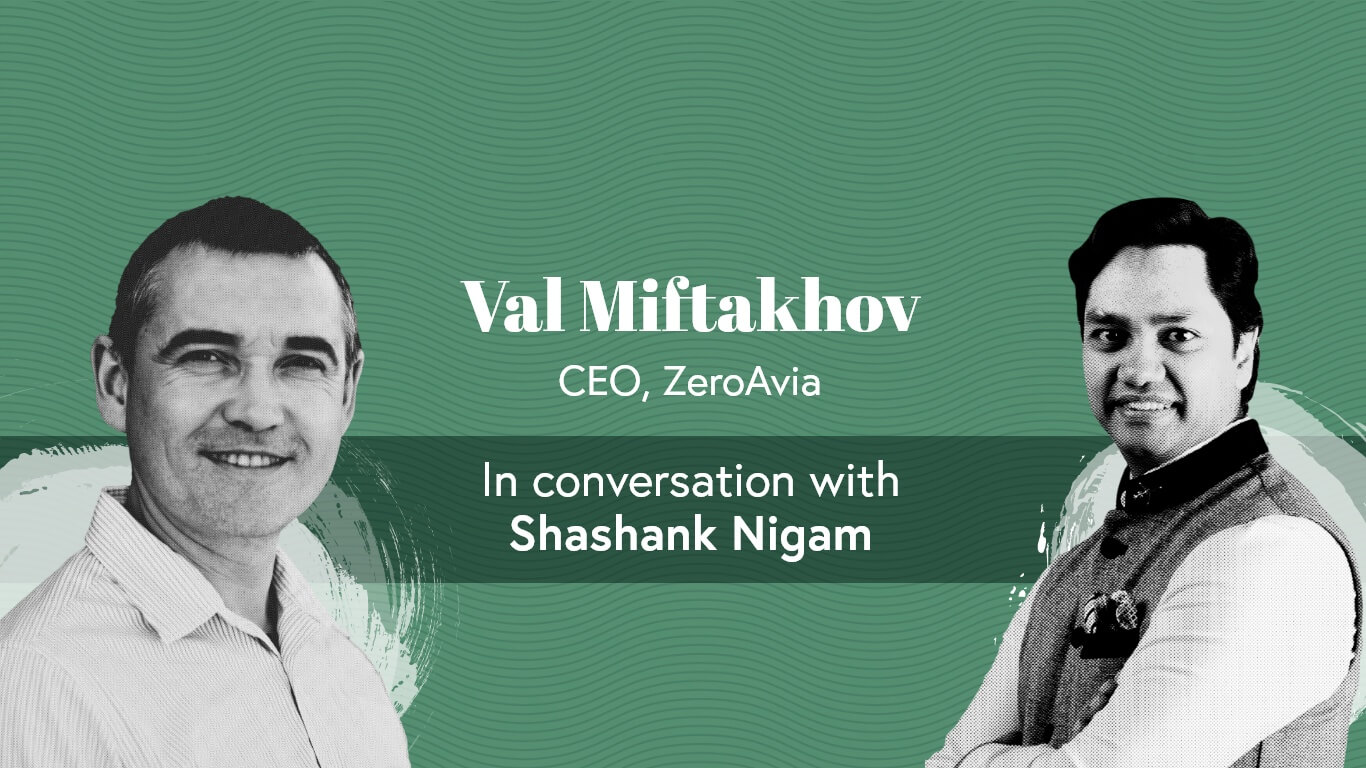NEWSLETTER
In Conversation: Holly Boyd-Boland, Virgin Atlantic


ZeroAvia, has set out to create a breakthrough zero-emissions solution by replacing conventional aircraft engines with hydrogen-electric powertrains.
These powertrains can be retrofitted to existing airframes and are powered using green hydrogen. ZeroAvia is currently developing powertrains for 10-20 seat commercial aircraft with a 500-mile range, and has plans to expand to large turboprops and regional jets.
In this episode of our ‘Sustainability in the Air’ podcast, ZeroAvia CEO, Val Miftakhov speaks with SimpliFlying CEO, Shashank Nigam and discusses how hydrogen electric engines are the disruptive solution the industry needs to scale aviation for commercial use.
You can listen and subscribe to our podcast, or read our deep-dive into the episode.
Here are some of the things Shashank and Val talked about:
Want to catch future episodes? Be sure to subscribe.
And with our partners CarbonClick, we will plant one tree for every new listener, and 50 trees for each review.
(Above image from environmental group ‘Possible’)
In the UK, environmental group, ‘Possible’ has announced that it is taking the Government to court to challenge its aviation net zero plans.
You can read the reasoning on their website, but in essence it comes down to two words – “demand management.”
Most environmental groups throughout the Global North take the view that it’s impossible to decarbonise aviation through technological innovation.
Instead, they want to put a brake on aviation growth. One of the main ways that they want to do that is through a so-called frequent flyer levy or air miles tax.
Environmental groups say that a small proportion of frequent flyers are responsible for the lion’s share of aviation emissions, so they want them to be taxed accordingly.
This frequent flyer tax would become progressively more expensive, the more you fly.
Leaving aside whether it’s practical to implement, one problem with a so-called frequent flyer tax is that it is a blunt instrument that does not incentivise less carbon-intensive flights.
Someone flying on a 30-year-old 767 would face the same charge as someone on a new A321neo LR.
It also wouldn’t make allowances for hydrogen-electric (see the above interview with Val Miftakhov) or hybrid-electric (see the interview with Anders Forslund) aircraft coming into service at the end of this decade.
‘Possible’ made the news in the Summer when it claimed that 49/50 airline sustainability targets over the past decade had not been met.
Deal news
Southwest Partners With 4AIR To Document SAF Use And Emissions (Simple Flying)
How are airlines looking to achieve their carbon emission targets? (Brighton Journal)
Hamburg Airport and Christchurch International Airport enter into joint climate partnership (Aviation24.be)
Fighting flying-high levels of greenwashing (EU Startups)
© 2022 SimpliFlying Pte. Ltd.